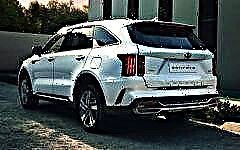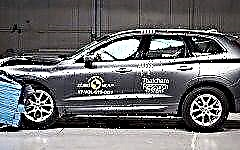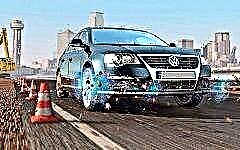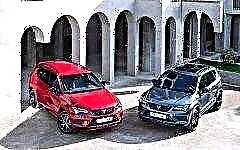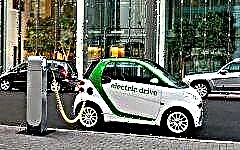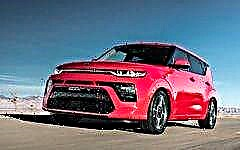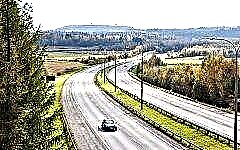
Traveling around Finland can be one of the best ways to visit many cities and experience some of the most breathtaking scenery in the world. Finnish road safety has improved significantly over the past ten years, which is reflected in traffic statistics, where the death toll is declining every year. The road conditions are good and the country has an excellent road network that connects from one place to another.
Finnish tracks are nothing special for many residents of Russian Karelia (and, of course, the Finns themselves), but there are still a number of interesting points worth exploring before setting off.
History

For centuries, Finland, like Russia, has been known for its bad (or nonexistent) roads. But this did not bother anyone. The plan for a national road network of 30 highways was first presented only in 1933.
Not many roads were built before the war, and sidewalks outside the cities did not exist at that time. Until the late 1940s, most Finnish roads were narrow gravel roads. After the war, the arteries in the southeastern part of the country went to the USSR; most of them are still active, although they are mostly minor routes; some are still not asphalted. The Finns later assigned the numbers of the lost roads to other routes.
Most of the main road network formed between the 1950s and 1980s. As in the US, in addition to the obvious benefits of having good freeways, this was an important employment project.
The first Finnish highway was built in 1962 (between Helsinki and the main suburb of Espoo). The construction of intercity highways was planned to begin in the 1970s, but the global oil crisis has put the plans on hold. Some broadband routes did not appear until the 1980s.
Motorway construction began on a large scale in the 1990s. At present, the national road network is considered more or less complete: modernization continues, but no major projects are planned.
Road network

Finland has a very dense road network and there are several alternative routes between most destinations. In this way, traffic is distributed more evenly and most roads do not meet the capacity limit (and do not wear out quickly).
It should be especially noted that all highways are well maintainedalthough outside the Greater Helsinki there are no large cities with a population of more than 300,000 people (even in Tampere 230,000, and in the vast majority of other settlements less than 100,000). Compared to Russian conditions, the density of the pavement is the main feature of the Finnish road network. While the main Russian highways are improving, there are still too few of them, and many minor ones are in poor condition, wherever they are.

Finland's road network is well organized. They are divided into five categories, all are assigned a unique number, making it easier to navigate. Within one category, the numbers usually increase towards the north of the country.
- The main national transport arteries are indicated by a number on a red background. It is a kind of skeleton of the national road "web". Traveling through the country in long dashes, you will probably spend most of the way on these highways. Almost all major highways are called national roads. Highways 1 to 7 diverge clockwise from Helsinki, 8-10 from Turku, 11-13 from Tampere (these are the three largest cities in the country). The rest connect other important points. The longest is considered "National Road 4" with a length of 1295 km - it stretches almost across the entire country from south to north.
- Minor tracks are marked in yellow. These are branches from the main network, approaches to small towns and state border crossing points. The quality is equal to the national one.
- Regional highways are marked in white. These are unimportant routes, predecessors of new roads and approaches to small settlements. Their quality can vary greatly: some are indistinguishable from national tracks, others can be extremely narrow and winding, there are even single-lane tracks. In some places there is no artificial turf, but this is rare - only 2-3% gravel.
- Connecting road numbers are shown against a blue background. They are similar to regional ones, but the share of unpaved roads is much higher here.
- Secondary connecting roads with 5-digit numbering are often not marked - as a rule, these are very short routes and approaches to villages.
There is a high proportion of private roads (usually with black markings without numbers), but if there are no gates or prohibition signs, they are allowed to drive freely (“the right to move” is a very important thing in Finland). The color of the direction indicators makes it easier to navigate:
- blue background is used by default;
- green - for road transport routes;
- white for local destinations;
- yellow - for temporary roads and detours;
- brown for tourist destinations;
- black - for private roads.
The total length of the road network is about 454 thousand km, including city streets and local objects that do not belong to the general numbering scheme, 78.2 thousand km of highways, paved roads and gravel roads, plus private and industrial roads (most are located in logging sites). This is quite enough, given the low population density and the absence of massive traffic flows (the lion's share of cargo transportation is carried out by water).
There are several European routes: they fall under both the European classification and the "local" one. For example, national roads 4 and 7 are also designated E75 and E18. There are no tolls, motorways tolls, bridges or tunnels - nor are there plans to introduce them.

It is curious that the Finns have a peculiar approach to the definition of a "real highway". Not all roads, even if they look appropriate and have the appropriate speed limits, are considered as such officially. Several new freeways are currently under development, but nothing special. Basically, these are additional sections that relieve the most "active" roads in the country.
Traffic jams are rare in Finland. You may hear complaints from Finns, but never from tourists. Their attitude to traffic intensity is completely different from that of residents of Central European megalopolises: for a Finn, a delay of a couple of minutes is equivalent to a “congested road”.
On the secondary routes, there are usually very few cars, and travel takes place only in the company of the sun and beautiful landscapes. Roads are often only gravel but well maintained - only spring thaw can be a little problematic.

Forest is Finland's "gold reserve", the only major natural resource. Since logging is an important industry (of course, everything is done responsibly - the trees are replanted so that the overall balance does not suffer), there are many unmarked logging roads. Usually they are passable by any car and end in a loop in the wilderness, where cars with mushroom-berry pickers and timber trucks can turn around.
On some dangerous sections of highways, fences are installed, including many kilometers of "elk fences".However, they do not protect 100% from encounters with animals, and one must be extremely careful when driving in forest areas - animals do not always try to get out on the road only where there are fences.
Traffic intensity and restrictions

There is no fare on the public network. The traditional speed limit outside cities is 80 km / h, sometimes 100. Exceeding is rare, however, slow traffic is not encouraged. Usually, all drivers drive at approximately the same speed, and the stream flows evenly.
The travel speed on motorways rises to 120 km / h. Many motorists prefer to drive more slowly, but since there are few cars, it is not difficult to overtake them if necessary. The limit has been lowered to 100 km / h or below near cities and on road work areas. In some places, electronic signs are installed that change restrictions depending on road conditions. They are usually accompanied by information boards showing air and road surface temperatures to warn of possible ice hazards.

In urban centers and densely populated residential areas, the speed is limited to 50, 40 or even 30 km / h, sometimes increasing to 60-80. Pedestrian crossings are accompanied by traffic lights, signposts and markings; there are many underground communications with convenient gentle slopes for cyclists, prams or people with disabilities.
When it comes to cameras, there are both mobile and fixed speed controls, so take your time if you don't want to donate your money to local authorities.
A distinctive feature of the local road network is ferry crossings: several dozen (more than 40) of various sizes are scattered throughout the country. Some have a timetable, others only ship on request. There used to be more of them, but over time they were replaced by bridges. Basically all ferries are free, except for a few private crossings and cruise tours to the Aland Islands, Estonia and Sweden.
Features of road construction and maintenance

Finland is located on solid rock. The Baltic or Fennoscandian shield is a good foundation for road construction. But the terrain is replete with hills, lakes, rocky outcrops and other inconveniences of the relief, so mining is often necessary to lay a relatively straight road. And on routes leading through areas of permafrost, forests and swamps, construction methods are mainly aimed at reinforcing loose peat areas (reinforced concrete slabs, sheet steel, polystyrene, foam concrete, geonets, geotextiles, chemical stabilization), deep drainage and removal of moisture outside roadway, resistance to destructive frosts and extension of the service life of the roadway.
The local climate is not as severe as in Siberia or Alaska. In most regions, it resembles St. Petersburg, only more marine, with moderately mild winters and cool summers.
In the extreme northern province of Lapland, conditions are much more difficult: temperatures often reach +30 in summer and -40 in winter, so the condition of the road branches in the north and south is different. They may not be perfect, but it is difficult to find difficult to pass or just uncomfortable to ride due to serious damage. Small potholes are encountered, especially after the spring thaw of snow, but they are quickly repaired.
Finns are thrifty people and often resort to replacing bad sections instead of re-covering the entire road. It doesn't always look aesthetically pleasing, but it allows you to travel safely at any speed. Road services react quickly, finding the “weakest links” and fixing problems before serious consequences occur.

Highways in Finland are open all year round, even in Lapland (no wonder, as winter can last for about six months in the north). Snowfalls often cause delays and increase the risk of an accident, but roads rarely overlap. In winter, they are serviced by snow plows. Sometimes they are "salted", as in Russia, only more economically, and in residential areas they are sprinkled with fine gravel, which is collected in spring. It is not used on fast freeways to avoid damaging the windshields.
Minor routes are usually not sprinkled with anything, and they are a tape of compacted snow. There is also a network of winter snowmobile trails (mainly in Lapland). Most ferries also operate all year round (some of them are powerful icebreakers). In winter, only those crossings that have an alternative route are closed.
Conclusion
The Finnish road network is in excellent condition, allowing the public to travel efficiently and quickly throughout the country. There are no traffic jams, it is easy to navigate, the drivers are calm and law-abiding, and the surrounding landscapes are magnificent. Traveling in Finland is easy and pleasant - this is recognized by all tourists.

|| list |
- History
- Road network
- Traffic intensity and restrictions
- Features of road construction and maintenance

